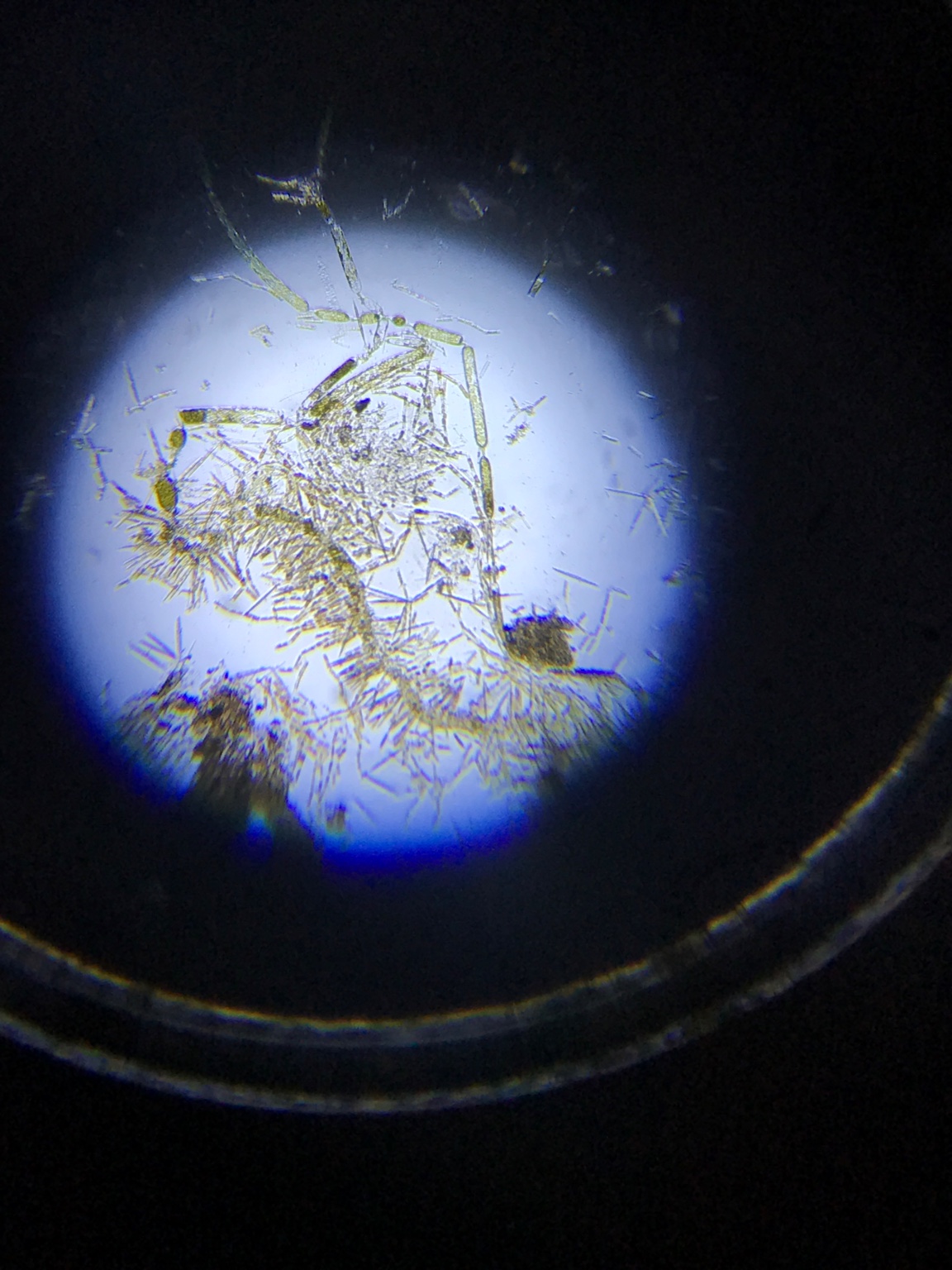Navigation
Install the app
How to install the app on iOS
Follow along with the video below to see how to install our site as a web app on your home screen.
Note: This feature may not be available in some browsers.
More options
You are using an out of date browser. It may not display this or other websites correctly.
You should upgrade or use an alternative browser.
You should upgrade or use an alternative browser.
Help identify the problem
- Thread starter Staisman
- Start date
- Tagged users None
nautical_nathaniel
Indecision may or may not be my problem.
View BadgesExcellence Award
Reef Tank 365
Photo of the Month
Article Contributor
West Palm Beach Reefer
Reef Squad Emeritus
Diatoms or Dinoflagellates, not cyano. Do you know what your water parameters are? You probably have too many nutrients in the water which is causing the bloom.
Last edited:
- Joined
- Dec 6, 2016
- Messages
- 25
- Reaction score
- 33
How long have you had your tank setup for? People usually get diatoms in their first few months. If its snotty and has air bubbles, could also be dinoflagellates
Best thing is to use a microscope (if you have access to one) to whittle it down. For months I had issues with what I thought was 'brown hair algae'. it looked similar to the stuff in your photos, I struggled to get rid of the stuff. Eventually I got fed up and bought a microscope, turns out it was a type of GHA with Diatoms bound to it. A combination of these organisms can really throw you off identifying them
Best thing is to use a microscope (if you have access to one) to whittle it down. For months I had issues with what I thought was 'brown hair algae'. it looked similar to the stuff in your photos, I struggled to get rid of the stuff. Eventually I got fed up and bought a microscope, turns out it was a type of GHA with Diatoms bound to it. A combination of these organisms can really throw you off identifying them
- Joined
- Nov 1, 2017
- Messages
- 35
- Reaction score
- 6
How long have you had your tank setup for? People usually get diatoms in their first few months. If its snotty and has air bubbles, could also be dinoflagellates
Best thing is to use a microscope (if you have access to one) to whittle it down. For months I had issues with what I thought was 'brown hair algae'. it looked similar to the stuff in your photos, I struggled to get rid of the stuff. Eventually I got fed up and bought a microscope, turns out it was a type of GHA with Diatoms bound to it. A combination of these organisms can really throw you off identifying them
My Tank is 3 years old, but i moved 5 month ago and setup bigger tank with same rocks but new sand and fresh water. I ordered a Microscope, should be here tomorrow.
- Joined
- Dec 6, 2016
- Messages
- 25
- Reaction score
- 33
So I moved to a new tank after 2 years. New sand new water old rock. I'm getting dinos on the sand at the moment. From what I've read on R2R it's best to let them burn out but I'd want to be sure that they're dinos before I sit back and let it runs its course. For reference this is what I was talking about, you can see the strand of GHA running along the middle and the diatoms lining up in filaments on the outside.




- Joined
- Dec 6, 2016
- Messages
- 25
- Reaction score
- 33
Did u get rid of it?
Yup, once i knew exactly what I was dealing with, I did some research to see what could be the potential causes. Diatoms use silicates for there cell structure and silicates in your RODI water don't show up in your TDS reading so I added another chamber of GFO to remove silicates. This made sure I wasn't adding silicates and fuelling the issue. I would also remove as much as I could on water change day using a small canister filter filled with poly filter. I used the filter input end to basically vacuum this crap up. I would also blow as much off the rocks as I could using a long turkey baster and letter the little canister filter run a while to remove it from the water. Then I'd do the water change. I gradually added some GFO to my reactor. I also installed a UV steriliser for good measure and reduced my lighting period and white led intensity.
There were some comments that some of these algae types take hold when you have a spike, once they take hold they can still thrive when your levels drop low...so manually removing was a key part.
It is generally very hard to actually know for sure what you're dealing with, without microscopic analysis. All of these slimy coatings that get on rocks and sand can look similar, and each can look different than other cases of the same organism. Diatoms, different types of cyano (spirulina vs oscillatoria for example), or different types of dinoflagellates - It's important to know for sure, because treatment varies.
It's mostly dinos, prorocentrum or maybe amphidinium. Can be hard to get rid of. Here's the recent very extensive R2R thread on the subject:
https://www.reef2reef.com/threads/dinoflagellates-–-are-you-tired-of-battling-altogether.293318/
And a slightly older and much longer one which I have not read:
https://www.reef2reef.com/threads/dinoflagellates-dinos-a-possible-cure-follow-along-and-see.253917/
https://www.reef2reef.com/threads/dinoflagellates-–-are-you-tired-of-battling-altogether.293318/
And a slightly older and much longer one which I have not read:
https://www.reef2reef.com/threads/dinoflagellates-dinos-a-possible-cure-follow-along-and-see.253917/
Last edited:
Myself , I'd wait. Do manual removal and water changes. You stirred up some stuff, so it's not unusual. Gfo /purigen might be a good idea and carbon.
It's quite possible it'll burn itself out.
Some kalk wasser in the ato won't hurt and the ph boost can help on a number of levels.
It's quite possible it'll burn itself out.
Some kalk wasser in the ato won't hurt and the ph boost can help on a number of levels.
- Joined
- Dec 6, 2016
- Messages
- 25
- Reaction score
- 33
I would treat for the dinos first as diatoms are usually harmless. What's your pH at? It's suggested raising pH to 8.4-8.5 slowly with Kalkwasser is a good treatment. I would start with that and see how that goes along with manual removal. See how that goes, if it still persists try getting your nitrates down and reducing your photoperiod.
There's extensive information in this article
http://reefkeeping.com/issues/2006-11/rhf/index.php
There's extensive information in this article
http://reefkeeping.com/issues/2006-11/rhf/index.php
Funny more folks don't reference that one more isn't it?I would treat for the dinos first as diatoms are usually harmless. What's your pH at? It's suggested raising pH to 8.4-8.5 slowly with Kalkwasser is a good treatment. I would start with that and see how that goes along with manual removal. See how that goes, if it still persists try getting your nitrates down and reducing your photoperiod.
There's extensive information in this article
http://reefkeeping.com/issues/2006-11/rhf/index.php
- Joined
- Dec 6, 2016
- Messages
- 25
- Reaction score
- 33
Funny more folks don't reference that one more isn't it?
It's and oldie but goldie [emoji4][emoji1417]It's interesting how the consensus is changing about nutrient levels and dinos at the moment though. The article mentioned to reduce them but I recently read people are having success by letting them rise by stopping water changes. Not sure if it's that's coincidental though, interesting none the less
I'm going with what the scientist says.It's and oldie but goldie [emoji4][emoji1417]It's interesting how the consensus is changing about nutrient levels and dinos at the moment though. The article mentioned to reduce them but I recently read people are having success by letting them rise by stopping water changes. Not sure if it's that's coincidental though, interesting none the less
Nutrient balancing is a recurring fad as far as I can tell. It's I belive a misconception of limitation. Some bacteria and organisms die off when one nutrient is missin allowing others that are more "hardy" to thrive and bloom.
Could you please describe your setup to me? We are missing information do you dose? If so... What products? What your Water change procedure? Do you do water changes. We could have excess minerals in the water from your dosing procedure. Could you please step me through your reef setup, so I can fully understand your process? Also what is your flow what units do you have, low flow pockets would cause locations for the algae to take root and multiply.
Similar threads
- Replies
- 2
- Views
- 104
- Replies
- 10
- Views
- 264
- Replies
- 6
- Views
- 315
New Posts
-
-
-
***Spring Grow Out - Class 2 Not Too Bad - Vote For Yours Today
- Latest: HudsonReefer2.0
-

















